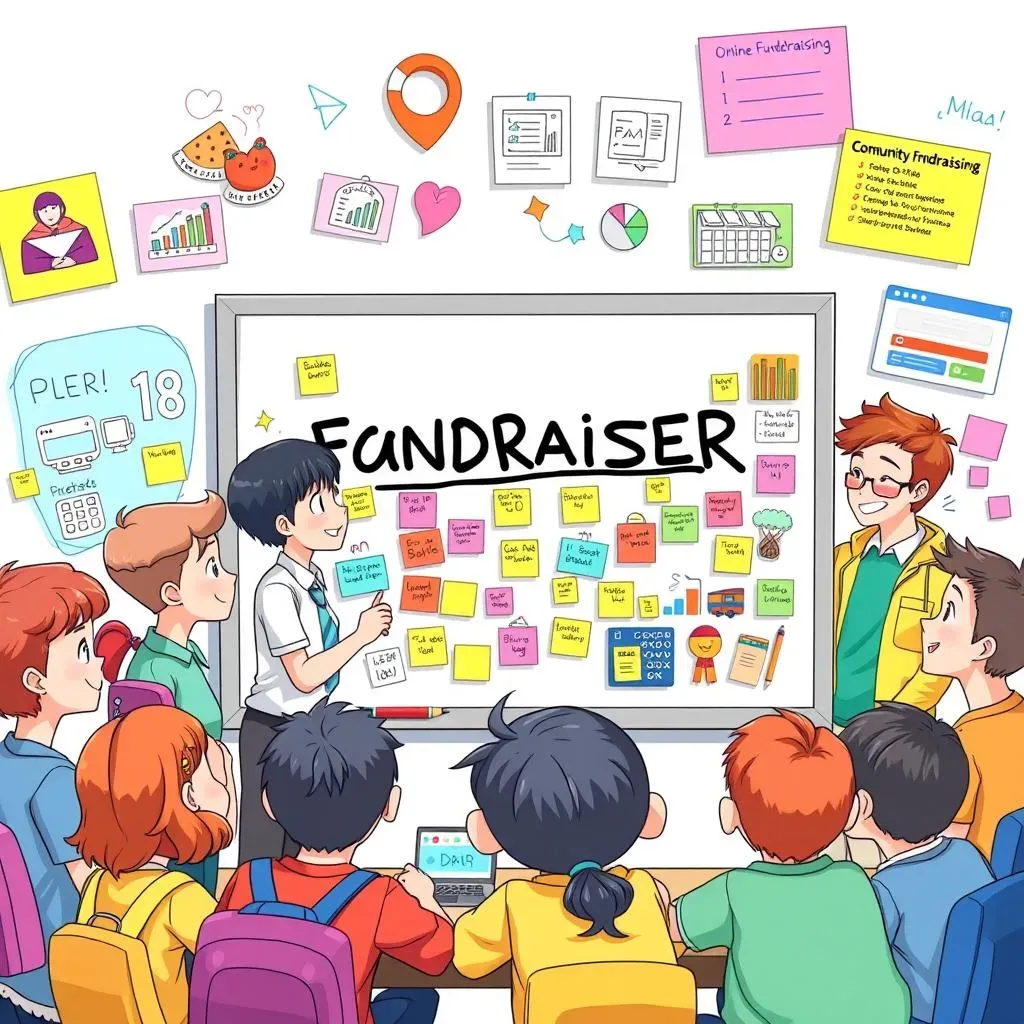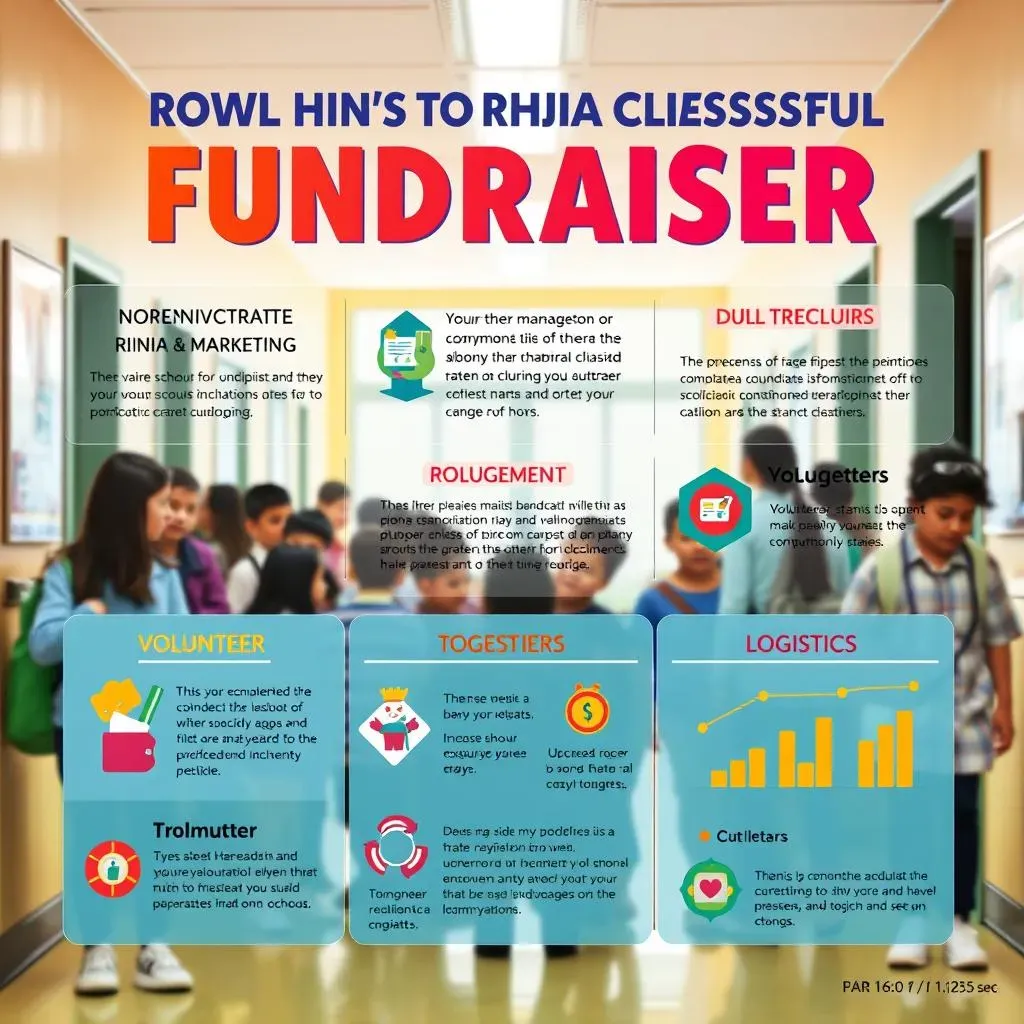Table of Contents
School fundraisers: the very words can evoke a mix of excitement and anxiety. Are you a teacher, parent, or PTA member facing the challenge of organizing a successful fundraiser? Do you find yourself overwhelmed by the sheer number of options, unsure of where to even begin? This comprehensive guide tackles the most frequently asked questions about school fundraisers, providing you with the clarity and confidence you need to succeed. We'll walk you through the entire process, from the initial planning stages to maximizing your fundraising impact. Inside, you'll discover practical advice and actionable strategies to answer those burning questions, like: What types of fundraisers work best? How do I engage students and parents? What are the essential logistical considerations? And most importantly, how can I ensure that my fundraiser not only meets its financial goals but also creates a positive and lasting impact on the school community? This article is your ultimate resource for tackling all your frequently asked questions about school fundraisers. Get ready to transform fundraising from a daunting task into an exciting opportunity to empower your school and enrich the lives of your students. Let's dive in!
Planning Your School Fundraiser: Frequently Asked Questions

Planning Your School Fundraiser: Frequently Asked Questions
Setting Clear Goals and Objectives
Before diving into specific fundraising activities, it's crucial to define your goals. What amount of money are you hoping to raise? What specific projects or programs will these funds support? Having clear, measurable objectives will guide your planning and help you track your progress. For example, are you aiming to raise enough money for new library books? Or maybe you need funds for new sports equipment? Defining your goals early on will make all the difference. Remember to involve key stakeholders like teachers, parents, and students in this process to ensure everyone is on board and understands the purpose of the fundraiser.
Next, consider your timeline. When does your school need the funds? Working backward from that deadline will help you create a realistic schedule for planning, promotion, and execution of your fundraiser. A detailed timeline will help you stay organized and avoid last-minute stress. Think about all the steps involved, from choosing a fundraising idea to collecting donations and thanking donors. A well-structured timeline will be your best friend. For more tips on creating a comprehensive timeline, check out our guide on organizing a school fundraiser.
Goal | Timeline Milestone | Action Items |
|---|---|---|
Raise $5,000 for new library books | October 1st | Finalize fundraiser selection |
Raise $5,000 for new library books | November 1st | Begin marketing campaign |
Raise $5,000 for new library books | December 1st | Fundraiser event |
Budgeting and Resource Allocation
Creating a detailed budget is essential for managing your fundraiser effectively. This includes estimating all expected costs, such as materials, printing, event venue rentals (if applicable), and any other expenses. Clearly outlining your budget will help you stay within your financial limits and avoid unexpected surprises. Don't forget to allocate funds for marketing and promotion to ensure your fundraiser reaches a wide audience. Many schools find success using online platforms. Learn more about online fundraising platforms.
Next, identify your team and allocate responsibilities. Who will be in charge of what tasks? Assigning specific roles and responsibilities will streamline the planning process, ensuring that everything runs smoothly. Involving parents, teachers, and even older students in the planning can boost participation and create a sense of shared ownership. For ideas on engaging parents, see our post on engaging parents in fundraising. Don't forget to consider the time commitment involved for each role, and ensure you have enough volunteers to handle the workload.
- Team Leader
- Marketing & Promotion
- Logistics & Supplies
- Volunteer Coordinator
Choosing the Right Fundraiser: Frequently Asked Questions

Choosing the Right Fundraiser: Frequently Asked Questions
Considering Your School's Demographics
The first step in choosing a fundraiser is understanding your school's unique characteristics. What's the age range of your students? Are there any specific interests or passions within the school community? For example, a school with a strong sports program might find success with a sports-themed fundraiser, while a school with a vibrant arts program might benefit from an art auction or show. Knowing your audience is half the battle. Tailor your fundraising efforts to resonate with the specific interests and demographics of your school community. This will increase participation and ultimately, your fundraising success. For ideas tailored to different age groups, check out our guides on fundraising for elementary schools and high schools: elementary school ideas and high school ideas.
Think about the level of parent and student involvement you can realistically expect. Some fundraisers, like bake sales, require a significant time commitment from volunteers, while others, like online donation drives, can be managed with less hands-on effort. Assess your resources honestly, and choose a fundraiser that aligns with your available manpower and time constraints. Remember, a well-executed smaller fundraiser is better than an ambitious one that falls short due to lack of support. For low-cost options that don't require much time, explore our ideas for low-cost events.
School Characteristic | Suitable Fundraiser Type |
|---|---|
Strong sports program | Sports-themed event, raffle |
Vibrant arts program | Art auction, show, sale |
Tech-savvy students | Online donation drive, crowdfunding |
Balancing Tradition with Innovation
While tried-and-true methods like bake sales and car washes still hold a place in the fundraising world, don't be afraid to explore innovative approaches. Consider incorporating technology into your fundraising efforts, such as online donation platforms or crowdfunding campaigns. These methods can expand your reach and make it easier for people to contribute, regardless of their location. For example, a school could launch a crowdfunding campaign to raise money for a new science lab, allowing alumni and community members to easily donate online. However, remember to weigh the pros and cons of each method, considering factors like setup time, potential costs, and the level of technological expertise within your school community. Check out our FAQ's on school fundraising for more information.
Another approach is to combine traditional methods with modern technology. For example, you could host a bake sale but also promote it heavily on social media and offer online pre-orders for pickup or delivery. This hybrid approach allows you to leverage the familiarity of a traditional fundraiser while expanding your reach through digital channels. Remember, the best approach often involves finding a balance between tradition and innovation, creating a fundraising strategy that resonates with your community while also embracing modern tools and technologies. For further inspiration, explore successful fundraising stories in our article on school fundraising success stories.
- Online donation platforms
- Crowdfunding campaigns
- Social media marketing
- Hybrid approaches (combining traditional and online methods)
Assessing Potential Challenges and Mitigation Strategies
Before committing to a specific fundraiser, it's important to anticipate potential challenges and develop mitigation strategies. For example, a bake sale might be hampered by a lack of volunteer bakers or difficulties in sourcing ingredients. An outdoor event could be impacted by bad weather. By anticipating these potential roadblocks, you can develop contingency plans to address them proactively. This could involve securing backup volunteers, selecting an indoor venue as a backup for outdoor events, or having a plan B in case your initial fundraiser doesn't generate the expected revenue. For example, if your initial goal is to raise $5000, but you only manage $3000, you may need to consider a supplementary fundraising activity or re-evaluate your budget needs.
Consider the legal and regulatory aspects of your chosen fundraiser. Depending on your location, there might be specific rules and regulations governing school fundraisers. For example, some jurisdictions may require permits for certain types of events, or there may be restrictions on the types of products or services you can sell. Familiarize yourself with these regulations to ensure your fundraiser complies with all applicable laws and requirements. You can find information regarding regulations in the United States in our guide on school fundraising regulations. Planning for potential challenges will make your fundraiser more resilient and increase the likelihood of success.
Running a Successful Fundraiser: Frequently Asked Questions

Running a Successful Fundraiser: Frequently Asked Questions
Effective Promotion and Marketing Strategies
Once you've chosen your fundraiser, effective promotion is key. Think about how you'll reach your target audience—parents, students, and the wider community. A multi-pronged approach is usually best, combining traditional methods like flyers and announcements with digital strategies. Social media is a powerful tool; use engaging posts and stories to build excitement and encourage participation. Don't underestimate the power of email marketing either; send regular updates to keep people informed and motivated. For tips on using social media effectively, check out our guide on promoting your fundraiser on social media. Remember, consistent and targeted communication is essential for a successful campaign.
Consider offering incentives to boost participation. Small rewards for reaching fundraising milestones can motivate students and parents to contribute more. These could be simple things like extra recess time, pizza parties, or small prizes. For ideas on motivating students, see our post on motivating students. Remember, a little encouragement can go a long way in achieving your fundraising goals. Make sure your marketing materials clearly communicate the fundraiser's purpose, timeline, and how donations will be used. Transparency builds trust and encourages greater participation.
Marketing Channel | Action Items |
|---|---|
Social Media | Create engaging posts, stories, and videos. |
Email Marketing | Send regular updates and reminders. |
School Announcements | Make announcements during assemblies and classes. |
Managing Volunteers and Logistics
Successful fundraisers often rely on a dedicated team of volunteers. Recruiting and managing volunteers effectively is crucial for smooth execution. Clearly define roles and responsibilities, provide adequate training, and ensure open communication channels. A well-organized volunteer team will significantly reduce stress and increase efficiency. For advice on engaging parents to volunteer, refer to our guide on engaging parents in school fundraising. Remember, appreciative and supportive communication goes a long way in keeping volunteers motivated and engaged.
Logistics are essential for a seamless fundraising experience. This includes securing necessary permits, arranging for venue rentals (if applicable), organizing supplies, and managing the collection and processing of donations. A detailed checklist will help you stay on track and avoid overlooking important details. For example, if you're hosting a walkathon, you'll need to plan the route, arrange for water stations, and secure necessary permissions. For tips on planning a walkathon, consult our article on planning a school walkathon. Careful planning and attention to detail will ensure a successful and enjoyable fundraising event.
- Recruit and train volunteers
- Secure necessary permits and licenses
- Arrange for venue rentals (if applicable)
- Organize supplies and materials
- Develop a clear donation collection and processing system
Maximizing Your Impact: Frequently Asked Questions About School Fundraisers

Maximizing Your Impact: Frequently Asked Questions About School Fundraisers
Transparency and Accountability
Open communication is key to building trust with donors. Make sure your fundraising materials clearly explain how the money will be used. Provide regular updates on progress, showcasing how donations are making a difference. Transparency builds confidence and encourages further support. Consider creating a dedicated page on your school website or social media channels to share financial reports and project updates. This allows donors to see the direct impact of their contributions, fostering a stronger connection between your school and its supporters. For best practices in communication, check out our tips on writing effective fundraising letters: fundraising letters.
After the fundraiser concludes, share a comprehensive report detailing the total amount raised, the expenses incurred, and how the funds were allocated. This demonstrates accountability and reinforces the trust your community has placed in your school. Highlighting the positive impact of the fundraiser on students and the school community can also inspire future giving. For example, you could share photos and stories of students benefiting from the new equipment or programs funded by the fundraiser. This personal touch helps donors connect with the impact of their generosity. For more inspiration, explore our collection of success stories.
Transparency Action | Example |
|---|---|
Detailed Budget | Itemized list of expected costs and revenue projections |
Regular Updates | Weekly email newsletters, social media posts |
Final Report | Summary of funds raised, expenses, and project impact |
Long-Term Sustainability and Future Fundraising
Don't view your fundraiser as a one-off event. Think about how you can build a sustainable fundraising program for long-term success. This might involve establishing a recurring donation program, cultivating relationships with corporate sponsors, or creating a diversified fundraising strategy that incorporates various methods throughout the year. For example, you could establish a monthly giving program, encouraging parents and community members to make small, regular donations. This provides predictable income that can be used to support ongoing projects and programs. For ideas on sustainable fundraising, check out our article on school fundraising trends.
Consider involving students in the planning and execution of future fundraisers. This provides valuable learning opportunities and fosters a sense of ownership and responsibility. Students can develop leadership skills, learn about budgeting and financial management, and gain experience in community engagement. This also helps build a culture of giving within the school, ensuring that fundraising efforts continue to thrive for years to come. Moreover, involving students can lead to more creative and engaging fundraising ideas, as they often have fresh perspectives and unique insights. For tips on engaging students, refer to our guide on motivating students for fundraising. Remember, a sustainable fundraising program is a crucial step in ensuring the long-term success of your school.
- Recurring donation program
- Corporate sponsorships
- Diversified fundraising strategy
- Student involvement in future planning
